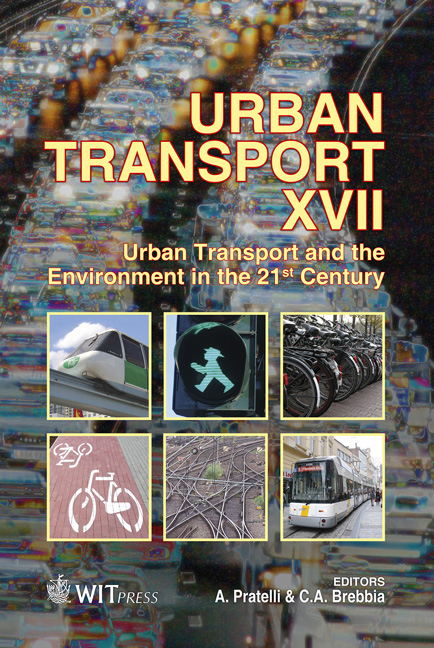The Car Free City Model
Price
Free (open access)
Transaction
Volume
116
Pages
12
Page Range
143 - 154
Published
2011
Size
3,777 kb
Paper DOI
10.2495/UT110131
Copyright
WIT Press
Author(s)
M. Alameri
Abstract
The great challenge emerging in sustainable developments around the world is to marry new transportation systems of conceiving cities, in line with the principles of quality and functionality of the transportation needs. Once the principles of quality of space and of functional requirements of the transportation system are evenly balanced, Man’s dependency on the car becomes questionable and how it is addressed in the urban fabric. The aim of this paper is identifying the urban fabric looking for a direct relation between human beings and the urban spaces rather than a man-car-space relation, where the car stands between man and the living space. The Masdar project is one of the first attempts to create a modern urbanized area of these dimensions that is completely free of privately-owned vehicles. Innovative and revolutionary in its principles, it follows a pragmatic approach to the issues related to cultural, technological and economical feasibility - enabling Masdar to become reality and a model for future sustainable urban developments based on a renewed relationship between man and urban spaces. The city has the opportunity to operate on a model that reduces carbon dioxide emissions, noxious gases, and provides a safer pedestrian and human friendly environment while reducing resident carbon footprints which contribute to global warming. Keywords: Masdar, car-free city, integrated transport, sustainability, innovation, new urbanism, master planning. 1 Introduction This paper explains how Masdar City has been designed as a car-free city. It shows how master planning and transportation planning have come together to deliver a sustainable integrated city where a projected 40,000 residents and 50,000 employees can live in an enhanced environment, free from the everyday traffic impact experienced by so many dwellers in traditional cities.
Keywords
Masdar, car-free city, integrated transport, sustainability, innovation, new urbanism, master planning





